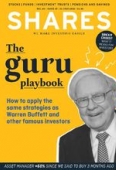Archived article
Please note that tax, investment, pension and ISA rules can change and the information and any views contained in this article may now be inaccurate.
Understanding Vanguard LifeStrategy funds and how they work

Many people will have heard of (and be invested in) Vanguard’s LifeStrategy range of funds. The funds are intended to be a
one-stop-shop for investors, giving access to different asset classes at a cheap price.
They have proved popular with investors, with the amount invested in them doubling to £10bn since February.
However, recent action by the City watchdog, the Financial Conduct Authority, that forced asset managers to reveal the true cost of funds has shown the funds to be more expensive than thought. The funds have also come under criticism as the investments do not change according to current market conditions quickly enough.
WHAT IS ON OFFER?
There are five funds in the LifeStrategy range, which invest in stock markets and bonds. Each fund has a different allocation to stock markets, ranging from 100% to 20%. The remainder of the allocation is to bonds. One shortcoming is that the funds do not invest in any other assets, such as property, commodities or infrastructure.
The funds invest in low-cost ‘passive’ funds to get exposure to the markets. These funds track a market or index, such as the FTSE 100, and mimic their performance.
The funds are marketed as costing just 0.22% a year, a low figure for a ready-made portfolio. However, figures released this year show that the extra costs on the funds, not included in this figure, are higher than many in the industry thought.
These transaction costs, which include the cost of buying and selling different investments, range from 0.08% for LifeStrategy 100% (GB00B41XG308) up to 0.13% for LifeStrategy 80% (GB00B4PQW151) and LifeStrategy 20% (GB00B4NXY349).
WHO DECIDES WHERE THE FUNDS INVEST?
Many of the Vanguard funds are run by computers, which automatically rebalance the portfolios every day.
However, a committee of people decides whether the allocations should change every three months – for example they may decide that more money should be invested in emerging markets and less money be allocated to the US.
Because this committee only meets four times a year, it means the funds will not react to day-to-day changes in politics, economies etc. For example, the fund allocations would not change based on the recent trade tariff moves between the US and China, or on the latest missive on Brexit.
A spokesperson for Vanguard said: ‘We believe that a strategic, as opposed to tactical, approach to asset allocation gives investors the best chance of investment success. Market timing is extremely difficult, even for professional investors.’
The funds are built on a market capitalisation-weighted basis – the largest companies in the indices carry a higher weighting than the smallest companies. This means the funds have a higher allocation to large companies – which over time may not deliver as high returns as small or medium-sized companies.
The funds also have a UK bias. While the UK makes up around 6% of global stock markets, 25% of the stock market portions of the Vanguard funds are allocated to the UK. However, Vanguard plans to reduce that over time.
A spokesperson for Vanguard said: ‘Investors often prefer to hold more in their home market. Over the past few years we have been gradually reducing this tilt in the fund range.’
HOW HAVE THE FUNDS PERFORMED
Taking a look at the performance the LifeStrategy 60% (GB00B3TYHH97) fund, which is the most popular with investors, who have put £3.7bn of money into the fund, it delivered 8.8% performance each year over the past five years. This compares to 7.5% per year over the same time period for its peer group.
During the same period the LifeStrategy 80% fund, which has 80% invested in global stock markets, has returned 10.4% a year for the past five years, compared to 7.5% per year over the same five years for its peer group.
WHAT IS THE COMPETITION?
While Vanguard LifeStrategy is the fastest growing fund range, there are competitors out there.
Asset management giant BlackRock has a similar set of funds, called Consensus. They have a more flexible allocation to stock markets, for example the BlackRock Consensus 85 (GB00B8D7RH96) fund can be between 40% and 85% invested in shares. The funds typically cost 0.23%.
AJ Bell also has a range of funds, with annual costs capped at 0.5%, running from Cautious (GB00BYW8RV97) to Adventurous (GB00BYW8VG25). The Cautious fund invests mainly
in bonds and cash-like assets, with a small allocation to stock markets, while the Adventurous fund is mainly invested in shares and high-yield bonds. There is currently no custody charge and no charge to buy the funds on the YouInvest platform.
L&G also has a range of eight funds, called the ‘Multi-Index’ funds – five target growth while three target income. Ongoing charges range from 0.31% to 0.39%.
Standard Life offers the MyFolio range, which is pricier at between 0.45% and 0.52% annual costs. The range runs from MyFolio Market I (GB00B7KSN259), which invests more in cash and bonds, to MyFolio Market V (GB00B3T5XZ20), which has around 90% invested in shares.
Laura Suter, personal finance analyst, AJ Bell
Important information:
These articles are provided by Shares magazine which is published by AJ Bell Media, a part of AJ Bell. Shares is not written by AJ Bell.
Shares is provided for your general information and use and is not a personal recommendation to invest. It is not intended to be relied upon by you in making or not making any investment decisions. The investments referred to in these articles will not be suitable for all investors. If in doubt please seek appropriate independent financial advice.
Investors acting on the information in these articles do so at their own risk and AJ Bell Media and its staff do not accept liability for losses suffered by investors as a result of their investment decisions.
Issue contents
Big News
- Stocks super charged by electric vehicle plans
- TalkTalk buyout rumours emerge as chairman ups stake close to 30%
- What the latest Brexit news means for markets and investors
- Echostar walks away but Inmarsat still in play, say analysts
- Sunny weather and England’s top World Cup performance hits holiday bookings

 magazine
magazine










